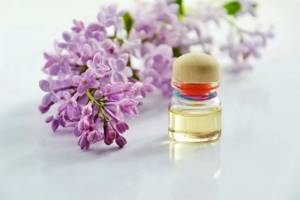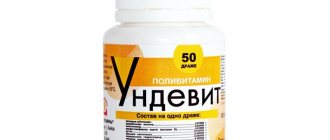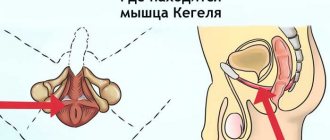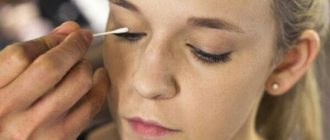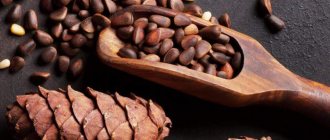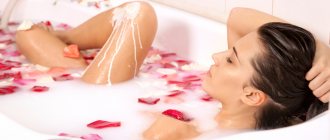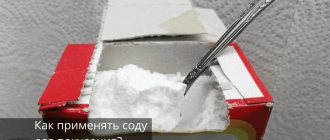People have been taking baths since ancient times. Previously, baths were organized both in natural springs and in specially constructed tubs and pools. Over time, taking a bath acquired the character of an art, as many appreciated not only the benefits, but also the pleasure of this process. And today it’s unlikely that anyone will be able to resist the temptation to soak in the warm water and relax. And if it’s a Jacuzzi, then additionally massage your body with jets of water. Water truly has the ability to not only remove dirt from the body, but also relieve physical and mental fatigue. And this procedure also helps save time when taking care of yourself, for example, a warm atmosphere will simultaneously improve the effect if you make hair masks with essential oils and rinse them off after taking a bath.
Water treatment (balneotherapy) is organized in medical complexes and sanatoriums with the goal of having a beneficial effect on certain human systems and organs in the most comfortable manner. Due to the availability in current conditions of various special bath products, a person can do these therapeutic, health-improving, relaxing procedures at home.
Types of baths and ways to take them correctly
Baths are taken for:
- washing;
- weakening the symptoms of certain diseases;
- treatment and psychological relaxation;
- losing weight;
- simple pleasure.
A modern person living in an urban environment will most likely take a shower to wash himself.
However, there are also those who, in order to feel truly clean, only need a font. But, unfortunately, not everyone knows how to take a bath correctly.
The procedure algorithm is as follows:
1. You need to immerse yourself in the font at least 20 minutes after eating, so as not to overload the heart and not disturb digestion.
Position in the bath - the chest should be slightly raised above the water for the same reason. 2. Before getting into the bath, you should definitely take a shower and wash off the dirt with a soap-containing product and a washcloth, cleansing your skin and opening your pores.
3. Bathing water should be at a temperature close to body temperature, that is, 35 - 37 oC. Although, there are varieties of hot and cold baths. Hot ones are indicated for colds and coughs. Water temperature – 40 ˚С, residence time – 5 – 10 minutes. Cold ones are possible to raise the tone of the body, for the purpose of hardening. Water temperature – 20˚С, time spent in the bath – 5 minutes. You shouldn't take cold baths without exercising. It is recommended to reduce the water temperature gradually, by a degree with each swim.
4. How long you need to take a bath depends on the purpose of the procedure. On average, you need to stay in the water for 15 – 20 minutes. There is no need to wash with soap after a bath; you can simply rinse your body with running water from the shower.
5. After swimming, even a seasoned person is not recommended to cool down suddenly. To keep warm, it is recommended to wrap yourself in a pre-prepared bath towel or warm robe.
6. It is best to take a bath before bed, and if during the daytime, then it is advisable to lie down for a while after it.
How to take a bath for health benefits
Taking a bath not only gives you the opportunity to enjoy and relax, but also has a beneficial effect on the skin and the body as a whole. Preparing a healthy bath at home is not at all difficult; you just need to have a few necessary ingredients on hand.
General recommendations
You need to enter the water gradually, first kneel down, and after a couple of minutes slowly sit down. Then lower your back into the water and gradually immerse your whole body. Even in a relaxed state, lying in the bath, change your position, move slightly, massage yourself. Start the massage from the tips of your toes and move gradually upward (direct all movements towards the heart area).
Massage can be performed either using a massage brush or simply with your hands. Massage in the bath is especially important for those who are on a diet and want to lose excess weight. Rub the pumice stone onto areas with rough skin—heels and elbows. After the massage you need to relax and have a good rest. To protect the skin from loss of oil and moisture, use salts, pine extracts, and herbs.
The healing effect of baths directly depends on the temperature of the water. The higher the difference between the temperature of the skin and the water, the stronger the effect of the baths. Cool (temperature 20-33 degrees C) and cold (up to 20 degrees C) baths have a general tonic effect, hot baths (40-42 degrees C) increase sweating.
Local contrast baths are often prescribed for those prone to various colds in order to harden the body. Hot water (40-42 degrees C) is poured into one container for such a bath, and cold water (10-12 degrees C) is poured into the other. For 10 minutes, the legs are alternately immersed for a couple of minutes in hot water, then in cold water for 15-20 seconds. The last thing to do is immersion in cold water.
To ensure that taking a bath has a healing effect, some aromatic and medicinal substances are added to the water: sage, starch, pine extract, soda, potassium permanganate, etc.
Pine baths have a calming effect on our body. 100 ml of pine extract is added to a 200-liter bath. The duration of such a bath is 10-15 minutes, the water temperature is 35-37 degrees C.
Mustard baths are especially effective for bronchial asthma (local hand bath), colds, hypertension (foot baths). They should not be taken if you have skin diseases or are individually intolerant to the smell of mustard.
To prepare such a bath, you should dilute mustard powder (100-250 g) in a small amount of water, strain through cheesecloth and then pour into a bath (about 200 liters in volume), mixing the water thoroughly.
The duration of use for a general bath is at a water temperature of 36-38 degrees C for 5-7 minutes, for a local bath (for arms and legs) - at a water temperature of 39-40 degrees C for up to 15 minutes. Before taking a general bath, especially sensitive areas of the body should be lubricated with Vaseline. After the procedure, the body must be washed with warm water, then wrapped in a blanket for half an hour to an hour.
Baths with potassium permanganate dry and disinfect the skin. Add it to water until you get a pale pink solution. The bath should be taken for 5-10 minutes daily or every other day. Finish by dousing with warm water.
Soda and starch baths
They are used for skin diseases to reduce itching and irritation.
A starch bath is prepared as follows: 3 tbsp. l. starch is brewed with boiling water, then dissolved in a bucket of water. For a soda bath, dissolve 1 tbsp. l. soda in a bucket of water. After such baths, the body should be wiped dry with a towel.
Milk bath
Therapeutic baths
Indications for balneotherapy are diseases:
- colds;
- dermatological;
- skeletal system and musculoskeletal system;
- other.
Baths help expand pores, improve blood circulation, enable active components from various supplements to penetrate the skin into the body, and improve the condition of the skin itself. During medical procedures, essential oils (coniferous oils for colds, for example), salt, herbal decoctions, etc. are added to the water. By relaxing the body in warm water, a person relaxes his nervous system, which is why balneotherapy is also indicated for some nervous and mental diseases.
Editor's recommendations: Hyaluronic acid for beauty - characteristics and methods of use
Health benefits of baths
- Studies have shown that taking baths significantly reduces blood pressure and reduces the risk of stroke, which is very important for people with hypertension. Baths also improve vision and have a beneficial effect on kidney health.
- A warm bath is like a good workout for the heart: it makes it work faster, thereby improving blood circulation and increasing sweating. And sweat is known to help remove toxins, viruses and bacteria from the body.
- A warm bath warms sore muscles, blocks pain receptors and relieves pain. A cold bath after exercise reduces lactic acid levels, allowing for faster muscle recovery.
- A study at the University of Wolverhampton found that taking a daily bath, usually at the end of the day, significantly improved mood and reduced symptoms of stress and anxiety.
- The best way to reduce inflammation in the nasopharynx, cure a runny nose, and remove phlegm from a cough is to breathe in the steam. The study also found that elevated body temperature during a cold may help the immune system work more effectively, protecting us from infections and viruses.
- Baths are especially useful not only for muscle pain, but also for rheumatism, since water reduces the impact on the joints.
- A good night's sleep is closely related to everything that happens in our body: how much we weigh, how we feel, how quickly we recover, etc. Taking a warm bath before bed is known to help you relax and fall asleep faster. Just do not go to bed immediately after the procedure, otherwise you can achieve the opposite effect.
What are the best baths for weight loss?
For weight loss, baths with soda and/or salt are recommended.
In combination with proper nutrition, sports and various types of cosmetic procedures, they really contribute to the loss of extra pounds, while deeply cleansing the skin, removing excess fluid from the intercellular space, accelerating cellular metabolism, and stimulating blood circulation. The procedure for how to properly take a bath with sea salt to lose weight, the first stage involves a shower and the use of an anti-cellulite scrub for problem areas.
You need to take 200-300 g of sea salt. You can add a few drops of lavender alcohol to the font. Residence time in water – up to 20 minutes. If you need to achieve a pronounced anti-cellulite effect, perform a vacuum massage with a jar after the bath. After this, it is recommended to wrap yourself in a towel or robe, immediately go to bed and cover yourself well. Excess fluid will leave the body. For a noticeable effect, the procedure should be completed in a course, taking baths every three days for a month.
The sequence of how to properly take a bath with soda is almost the same. To increase the beneficial effects of bathing on the body, you can combine soda and salt in a ratio of 150 g to 150 g.
Action of baths
Warm and hot water has a calming effect. Capillaries dilate, blood pressure decreases.
Together with sweat, toxins and harmful substances leave the body. The kidneys are unloaded. Depending on the characteristics of the body, baths of different temperatures are used for diseases. The duration of the procedures also varies.
Long hot soothing baths are not recommended for people with cardiovascular diseases, a tendency to hypotension and fainting.
Baths for relaxation
Just lying in the water after a busy day is already a pleasure. The pleasure can be doubled by adding foam, plain and table salt, herbal infusions and essential oils. It is better to pre-dissolve essential oils of various plants in a small amount of milk or rolled oatmeal decoction before dripping them into the font.
Restorative baths
For these, well-known and popular pharmaceutical herbs are used: chamomile, string, yarrow, marigold, mint and sage.
Foam bath
There are simple soap and scented foams. Simple foams gently cleanse the skin, while scented foams create an additional effect thanks to various components. Foams are not recommended for frequent use as they dry out the skin.
Bath with aromatic oils and extracts
- The most popular are pine baths (with extracts of pine trees). They soothe, improve sleep, relieve allergic reactions to the skin, and are good for colds.
- Tea tree oil and extract have antibacterial properties.
- A bath with sage will soothe and help with coughs.
- Mint and lavender extracts have a calming effect and will help you sleep soundly; in addition, regular aromatic baths with these additives help moderate your appetite, maintain your diet and not break.
Herbal extracts for baths
Any baths with the addition of a plant extract, infusion or decoction have a specific effect. Each type of plant material has its own unique effect. To take soothing baths, it is important to choose the right medicinal raw materials.
The corresponding extract can be purchased at the pharmacy or prepared as a decoction. To prepare the decoction, boil the herb or other parts of the medicinal plant in an enamel bowl for 20-30 minutes. Let it brew for 30 minutes, strain and stir, pour into the filled bath.
Taking a soothing bath should not exceed thirty minutes. The water temperature should not exceed 40°C.
Chamomile for baths
Sometimes chamomile is used to treat nervousness. Pour cold water over chamomile, put on fire and boil in a covered saucepan for 10 minutes. Strain the broth and pour into a bath filled with water. For a bath per 100 liters of water, 0.5 kg of raw materials is enough. Water temperature is from 36 to 37 °C. The duration of the procedure is 15-20 minutes.
All that remains is to add that you should not get carried away with too hot baths. Since hot water negatively affects the elasticity of the skin and can promote the expansion of capillaries. After taking a bath, be sure to rinse your skin with cool water and apply nourishing body milk to your skin.
Do you like to soak in the bath? Make your favorite procedure even more beneficial - start adding herbal infusions and various food products to the water. We take into account your health status, body characteristics and goals: each has its own supplement. Let's study the assortment - and you can get started!
Soothing baths for children
Children are often very excitable, and in this case some reassurance is required for them - in particular, in the form of baths, which help kids relax and get rid of the tension accumulated during the day. After such water procedures, children behave much calmer and also fall asleep well at the right time.
Experts advise showing the child to a neurologist before starting a course of calming baths in order to exclude the possibility of disturbances in the functioning of the nervous system. If everything is in order in this regard, then the baby can be bathed using special means.
For children whose nervous system is not yet fully formed, soothing baths are the best way to relax and calm down. True, any of the above components can provoke allergies in the baby, and therefore you need to choose a suitable soothing composition for the bath very carefully.
It is important to remember that the water temperature should not be higher than 37 degrees, and it is not recommended to keep the baby in the water for more than 15 minutes. Plants for children's baths should not be collected independently or purchased on the market. It is safer to buy them at a pharmacy. Finally, remember that plants such as thuja, celandine or tansy are completely unsuitable for children. What is suitable, you ask?
Calming herbs for children
As you know, a child’s skin is very susceptible to the effects of various agents, and special baths with a calming effect also help remove harmful substances from the child’s body that affect the well-being and behavior of children. Including waste products that tend to linger in the body and create discomfort, and sometimes provoke diseases.
Among the plants used for preparing baths are lavender, valerian root, motherwort, pine needles, lemon balm, motherwort. If your baby has a restless sleep, he will benefit from salt with lavender, mint, and for skin rashes - with chamomile or string.
When preparing a collection (no more than 4 plants at a time), you should make sure that the child does not suffer from phytoallergy. To exclude this possibility, you should contact a specialist.
The pediatrician will tell you how best to monitor the child’s reaction to the medicinal plants used or drugs recommended for soothing baths. As a rule, they test herbal decoctions or extracts on a small area of skin - and, if no negative reaction occurs, then take a bath.
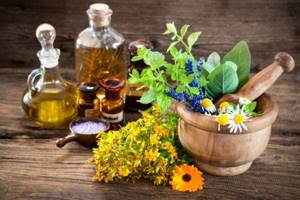
Best Bath Supplements
Warm water is an excellent sedative. But if you want to more effectively influence the nervous system, and in addition to relaxation, get healing and cosmetic effects, you will need supplements. For example:
- to relieve stress, calm, relax and prepare for bed, use bubble bath, sea salt, pine cones and branches, as well as essential oils (lavender, valerian oil);
- Herbal infusions (sage, eucalyptus, string) will provide a therapeutic effect on the body;
- Essential oils (rose, sandalwood, lemon balm and patchouli) will provide a healing and cosmetic effect.
Soothing herbal baths
Baths with medicinal herbs deserve special attention. They are prepared by simply brewing or briefly boiling, after which the prepared broth is filtered and added to the bath.
The choice of a specific herb should be based on the purpose of taking a soothing bath. If your goal is to relax and relieve nervous tension, you should take this bath regularly, 2 times a week. If your goal is therapeutic, you need to carry out no more than 10 procedures with the same regularity.
Healing herbs for baths can be purchased at a pharmacy or collected yourself. In this case, herbal baths can be single-component or multi-component. The best example of a one-component bath.
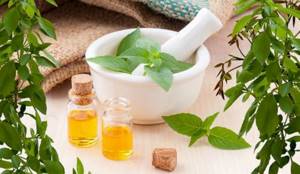
Bath with valerian
Pour 100 g of crushed valerian root into 1 liter of boiling water. Place the product in a water bath, boil for 15 minutes, then filter and add to the bath.
However, multi-component herbal baths are considered the most effective. Here are some useful combinations:
Sweet clover and thyme
Combine 100 g of sweet clover and thyme leaves, pour 2 liters of boiling water over the mixture and leave for a couple of hours. After filtering the finished product, pour it into the bath and you can begin the procedure.
Wormwood, linden and rosemary
Combine 150 g of each herb, then pour 2 liters of cold water over them and leave for 20 minutes. Pass the infusion through cheesecloth and you can use it for medicinal purposes.
Chamomile and linden
Taking a handful of chamomile flowers and linden leaves, combine them in a glass container and pour 1 liter of boiling water. Place the prepared mixture on the fire and simmer for 15 minutes, then let it brew for 1 hour. The decoction is ready, all that remains is to strain it and add it to the bath.
Sunflower seeds, calamus root and valerian root
After grinding 50 g of sunflower seeds, combine them with 100 g of crushed calamus root and 150 g of valerian root. Pour the mixture into 2 liters of water, keep it on low heat for 10 minutes and let it brew for 30 minutes. Pass the liquid through cheesecloth and pour into the bath.
Melissa, lavender, rosemary and mint, sage and thyme
Having combined 100 g of each of the listed ingredients in a deep saucepan, pour 3 liters of boiling water over them and let it brew under the lid for 20 minutes. After this, filter and use as intended.
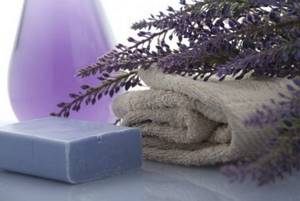
Wood mallow, smokeberry, lemon balm and thyme
Combine 50 g of fume grass and wood mallow herb, add 100 g of lemon balm and 200 g of thyme to the mixture. Pour the resulting mixture into 2 liters of water, boil over low heat for 10 minutes and leave the broth for 20 minutes. After straining the product, dilute it with the water in the bath.
Baths with essential oils
Essential oils are extremely beneficial components of soothing baths. They have a relaxing effect on the body and improve skin condition, and their aroma helps to relax and resist stress. The most suitable in this regard are: neroli, lemon balm, lavender and patchouli oils. Let's look at their properties in more detail.
Lavender oil perfectly relaxes the nervous system, relieves muscle spasms and improves sleep. It is often recommended for use by people with rheumatism and osteochondrosis.
Melissa oil is another well-known antispasmodic that copes with problems of the respiratory system and improves skin condition.
Rose oil is an excellent antidepressant, the aroma of which improves mood. Just add 3 drops to a soothing bath to make all your problems a thing of the past.
Neroli oil improves mood and helps prevent depression. This oil perfectly cleanses the skin of acne and blackheads.
To influence the nervous system, it is enough to add 2-4 drops to the bath before the procedure.
